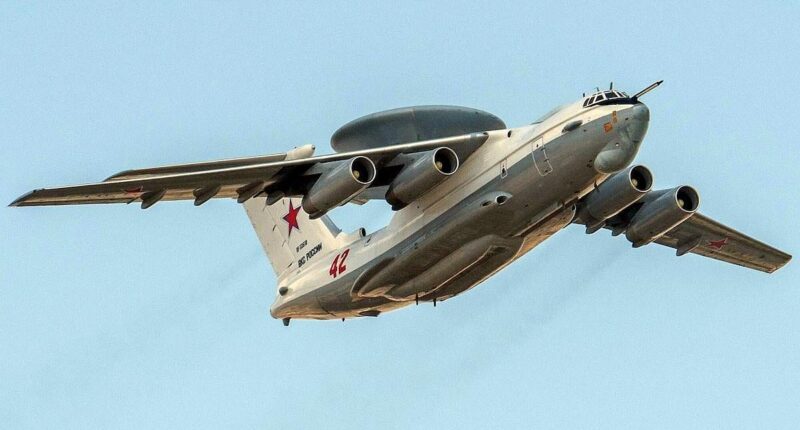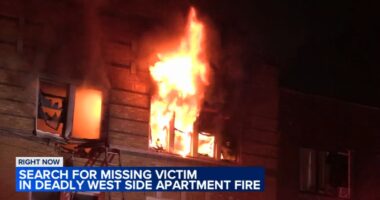
It was a top-secret operation some 18 months in the planning. Codenamed ‘Spider’s Web’, it was executed with devastating effect yesterday afternoon and was as audacious as it was genius.
And as Volodymyr Zelensky said, just hours before Ukrainian and Russian delegates meet for negotiations in Turkey’s capital Istanbul today, the attack on Vladimir Putin’s irreplaceable nuclear bombers ‘will undoubtedly be in [the] history books’.
The attack was carried out exactly 29 years to the day after Ukraine handed over dozens of the same strategic bombers to Russia, along with up to 2,000 strategic nuclear warheads and 176 ICBMs in exchange for a promise not to be attacked, under the Budapest Memorandum.
In their most daring attack of the war to date, Ukrainian special forces first smuggled 117 first-person view (FPV) kamikaze drones – which allow pilots to control them remotely through a live feed – into Russia.
Then came mobile wooden cabins, whose roofs had hidden compartments into which the small flying weapons were stashed.
They were loaded on to civilian trucks heading into enemy territory, their hired local drivers seemingly unaware of what they were carrying.
Finally, yesterday afternoon, with all the lorries within range of five airfields stretching from northern Russia down to Siberia – a safe 2,500 miles from Ukraine – they struck.
The roofs of the wooden cabins were opened remotely and the FPV drones took to the skies.
With the help of front-positioned cameras, the missile-loaded drones headed straight for Russia’s highly expensive bomber planes.
Footage showed decimated enemy planes in flames on the runway and last night Ukrainian security sources claimed to have taken out 41 aircraft worth some £1.5billion.
These, they say, include the nuclear capable Tu-95 and Tu-22M as well as the surveillance A-50 ‘Mainstay’ plane, worth an estimated £250,000,000 that is used as a radar and command centre, of which Russia is only believed to have around ten in operation.
‘Mainstays’ are critical to coordinating Russian fighter jets and air defences, meaning that this will have severely hampered Putin’s war effort.
Moscow has long stopped producing any of these aircraft meaning, if confirmed, these assets could not be replaced.
There are only around 120 Tu-95s and Tu-22Ms in operation and they are vital for Putin’s nightly bombing raids on Ukraine.
They had been moved to bases thousands of miles away from Ukraine, out of reach of Western-donated Storm Shadows and ATACMS which have a range of up to 185 miles.
The FPVs, which can reach just 12 miles, would have been the last thing on Russian minds.
Mr Zelensky last night claimed that the operation took out a third of Russia’s strategic bombers and had been conducted under the noses of its secret service.
He said: ‘What’s most interesting, is that the ‘office’ of our operation on Russian territory was located directly next to FSB headquarters in one of their regions.
‘In total, 117 drones were used in the operation, with a corresponding number of drone operators involved, and 34 per cent of the strategic cruise missile carriers stationed at air bases were hit. We will continue this work.’
Military blogger Roman Alekhin said the incident will go down as ‘Russia’s Pearl Harbour’ – a reference to the Japanese attack against the US in 1941 that prompted Washington to enter the Second World War.
But experts also drew comparisons to the 1942 SAS raid on the Sidi Haneish airfield in Egypy, when elite British commandos put 40 Luftwaffe aircraft out of action using jeeps mounted with machine guns.
While the attack wasn’t a pivotal moment in the Desert War, it massively boosted British morale and disrupted Axis logistics in North Africa.
It was also one of the pivotal events that helped forge the legendary status of the SAS.
Former RAF pilot and military analyst Mikey Kay told the BBC: ‘The Russians would never have expected something like this. I mean, it’s genius, if you think about just the devastating effect that it’s had on strategic assets of Putin.’
Philip O’Brien, professor of strategic studies at St Andrews University, said the raid was ‘the most remarkable and successful operation of the war.’
He told The Times: ‘This is a big blow to Russian strategic air power, which is hard to overestimate. We do not know what the Russian reaction will be, however we can assume it will be violent.’
A Telegram channel called Fighterbomber, widely believed to be run by Captain Ilya Tumanov of the Russian Army, wrote of the attack: ‘Today will later be called a black day for Russian long-range aviation. And the day is not over yet.’
Mr Zelensky, who is said to have overseen the operation over the last year and a half, celebrated the strike on social media last night.
The Ukrainian president wrote: ‘A result achieved solely by Ukraine. One year, six months, and nine days from the start of planning to effective execution. Our most long-range operation.’
He added: ‘These are Ukrainian actions that will undoubtedly be in [the] history books.’
A delegation from Kyiv is due to meet counterparts from Moscow for a second round of peace talks in Istanbul today but it was not clear last night if it would still go ahead.
Ukraine has said that its proposals will include a full 30-day ceasefire followed by the return of all prisoners held by each side.
Negotiators also want some 20,000 Ukrainian children who were kidnapped by Russia to be repatriated before Mr Zelensky and Putin meet.
Russia has so far refused to agree to a 30-day pause in fighting and overnight on Saturday launched its largest strike of the war so far with 472 drones and seven missiles.
Kyiv’s Operation Spider’s Web struck Belaya air base in the Irkutsk region of Siberia; Dyagilevo air base in Ryazan, western Russia; Olenya air base in Murmansk, northern Russia; and Ivanovo air base in Ivanovo, central Russia.
The fifth air base was yet to be identified last night. The operation, led by Mr Zelensky and security service boss Lieutenant General Vasyl Malyuk, marks the first time Ukraine has struck targets inside Siberia.
Kyiv put the cost of the damage at more than £1.5billion because each A-50 aircraft is valued at around £260million.
Last night Russia was arresting the truck drivers, but hours earlier Ukraine had reported that its agents were safely home.
FPV drones usually need a pilot within six miles which suggests Ukrainians may have been close to the airfields during the strikes.
Hours before the drone strikes a wave of bomb attacks targeted Russian bridges and railway lines in regions bordering Ukraine.
Russia declared them ‘acts of terrorism’ with seven killed and dozens injured when a passenger train travelling to Moscow was derailed by a collapsed bridge in Bryansk on Saturday night.
Hours later, in neighbouring Kursk where Ukraine launched its major cross-border incursion last August, a freight train was derailed by another fallen bridge.
A Russian missile strike on a Ukrainian army training area killed at least 12 soldiers yesterday and wounded more than 60 others, the Ukrainian army said.
Kyiv has carried out a series of daring attacks on Russia since the start of the war, with one of first being the counter-offensive which liberated the city of Kherson in November 2022.
Ukrainian armed forces also took swathes of territory in Kursk last August in what was the first occupation of Russian land since the Second World War.
Putin only succeeded in pushing Ukraine out of the territory in March.

















